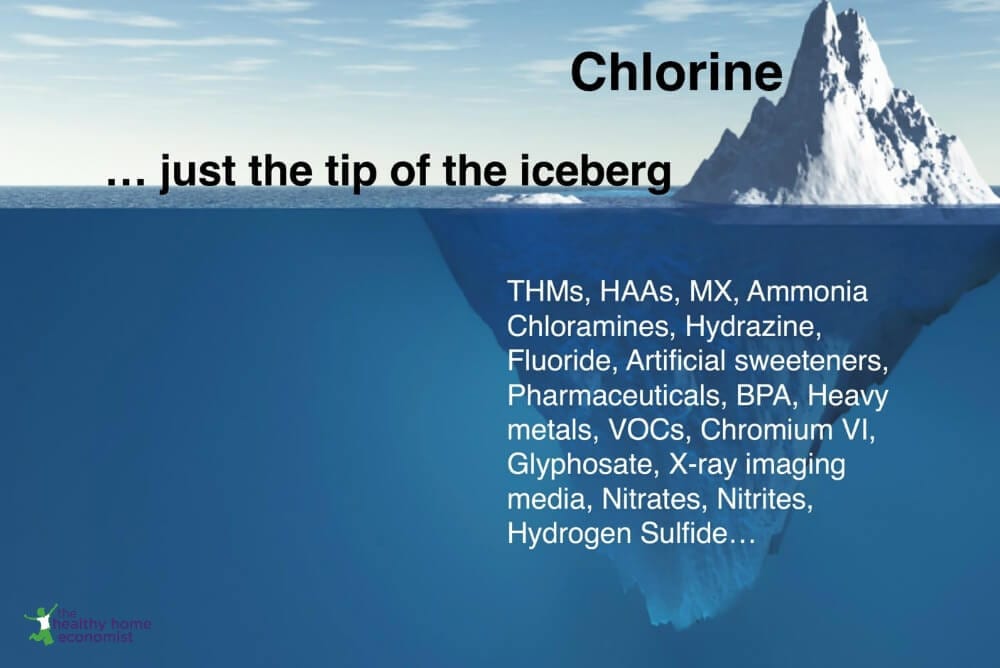Introduction:
Imagine sipping a refreshing glass of water, unaware of the hidden dangers lurking within. Trihalomethanes (THMs) are harmful contaminants found in many sources of drinking water. These chemical compounds can pose serious health risks, including an increased risk of cancer, reproductive problems, and developmental disorders. In this comprehensive guide, we will uncover the insidious nature of THMs and provide practical, evidence-based solutions to safeguard your drinking water.

Image: www.youtube.com
Understanding Trihalomethanes:
Trihalomethanes are a group of volatile organic compounds that form when chlorine, a common disinfectant, reacts with organic matter in water. These compounds include chloroform, bromodichloromethane, dibromochloromethane, and bromoform. Their presence in drinking water has raised concerns due to their potential health effects, with the EPA setting maximum allowable levels for each compound.
Health Risks Associated with Trihalomethanes:
Exposure to THMs can occur through drinking, showering, or bathing in contaminated water. Studies have linked long-term exposure to THMs with an increased risk of several adverse health outcomes, including:
Removing Trihalomethanes from Drinking Water:
Concerned about the potential presence of THMs in your drinking water? Several effective methods can help reduce or eliminate these harmful compounds:

Image: thebetterparent.com
1. Boiling:
Boiling water for at least 5 minutes can evaporate THMs. However, boiling does not remove other contaminants present in the water.
2. Activated Carbon Filtration:
Activated carbon filters effectively remove THMs from water through adsorption. These filters can be installed under sinks, on faucets, or in whole-house filtration systems.
3. Reverse Osmosis:
Reverse osmosis systems force water through a semipermeable membrane, effectively removing THMs and other dissolved contaminants. However, reverse osmosis systems may waste a significant amount of water.
4. Distillation:
Distillation involves boiling water and collecting the condensed steam, which is free of THMs and other impurities. Distillation systems can be costly and energy-intensive.
Expert Insights:
“Protecting your family from harmful THMs is crucial,” says Dr. Emily Carter, an environmental health expert. “Activated carbon filtration and reverse osmosis systems are effective solutions that provide peace of mind.”
“Regularly testing your water for THMs is essential,” advises Dr. Mark Jenkins, a water quality specialist. “Home testing kits can provide valuable insights into the safety of your drinking water.”
Actionable Tips:
-
Consider using a certified activated carbon filter or reverse osmosis system to remove THMs from your drinking water.
-
Avoid boiling water for extended periods, as this can increase the concentration of other contaminants.
-
If you use a well for drinking water, have your water tested regularly for THMs and other potential contaminants.
-
Consult with a water treatment professional to determine the best solution for your specific water supply and needs.
How To Remove Trihalomethanes From Drinking Water
Conclusion:
Protecting yourself and your loved ones from the harmful effects of trihalomethanes is essential for optimal health and well-being. By understanding the risks associated with THMs and implementing the recommended removal strategies, you can enjoy clean, safe drinking water with confidence. Remember, early detection and proactive action are key to mitigating potential health risks and safeguarding your well-being.